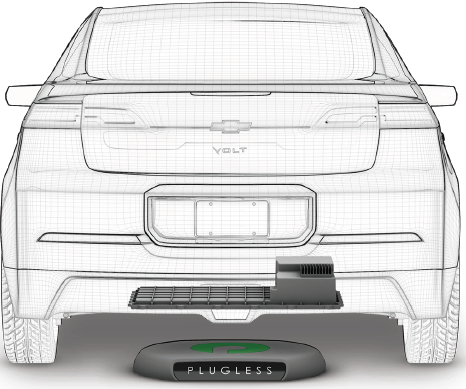8. June 2015 18:47 by streng in
NB RF Immunity for EV should be carried out per IEC 61980-1 Annex B - Radiated RF Field 20 MHz - 2 GHz @ 30V/m using the test setup per ISO-11451-2:2005.
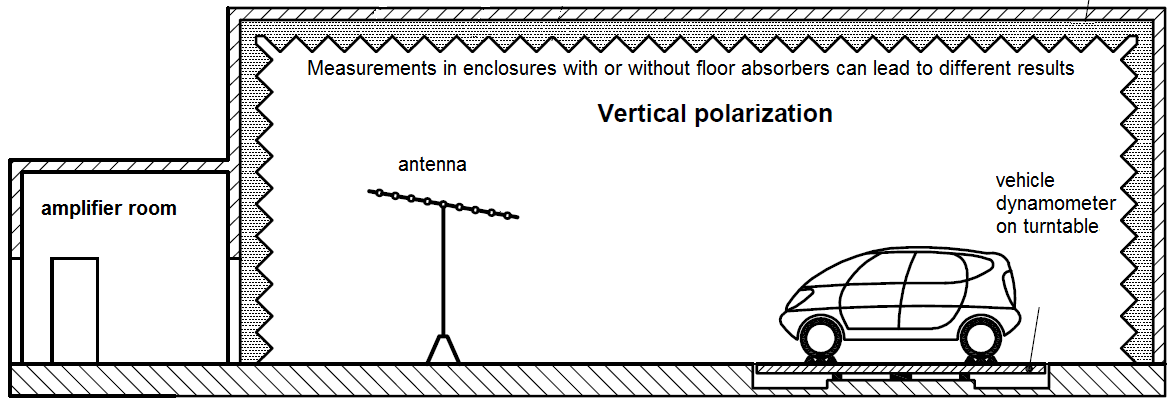
The test is performed in ALSE chamber, the aim being to create an indoor electromagnetic compatibility testing facility that simulates open field testing.
The position or positions of the vehicle relative to the antenna or TLS (Transmission Line System) are specified in the EMC test plan.
The radiating elements of the field-generating device is no closer than 0,5 m to any absorbing material and no closer than 1,5 m to the wall of the shielded enclosure.
No part of the radiating antenna is closer than 0,5 m to the outer body surface of the vehicle. The phase centre of the antenna is separated by at least 2 m horizontally from the reference point. No part of an antenna's radiating elements is closer than 0,25 m to the floor. There is no absorber material in the direct path between the transmitting antenna and the DUT.
No part of a TLS, with the exception of the ground plane, is closer than 0,5 m to any part of the vehicle. The TLS radiating element or elements is separated by at least 1 m vertically from the reference point. The TLS is extend centrally over at least 75 % of the length of the vehicle.
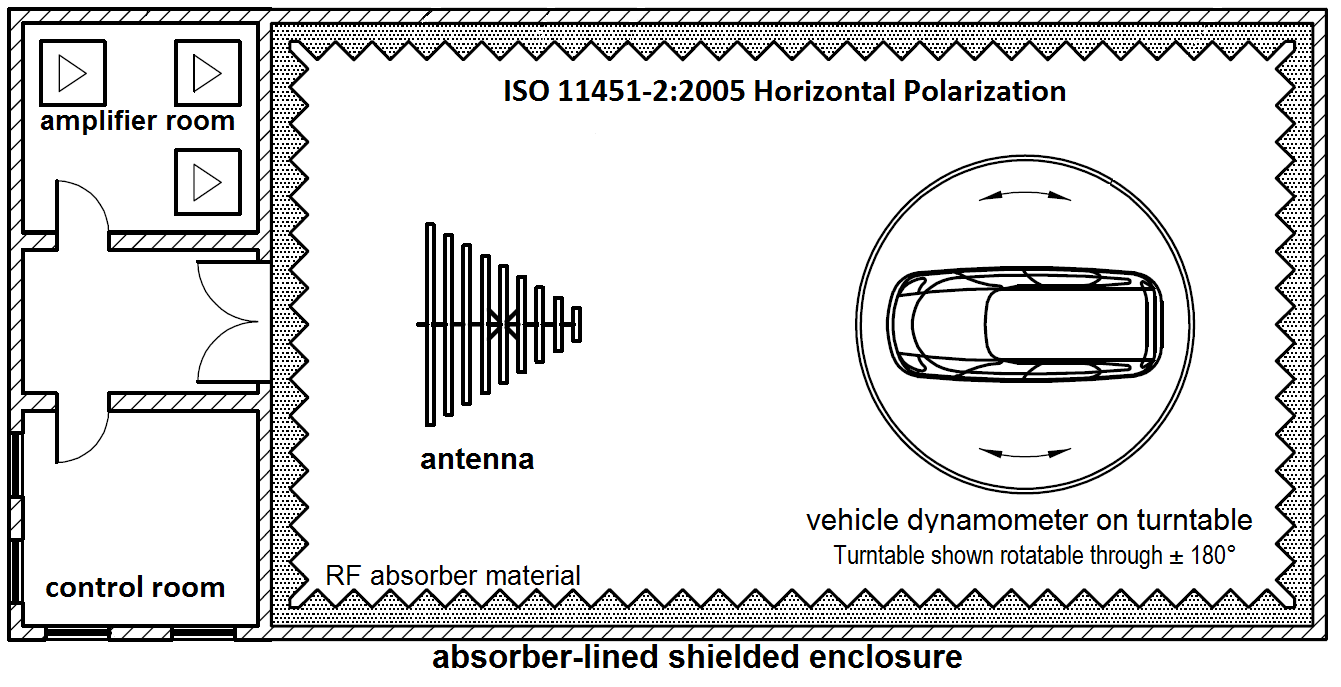
The test is performed using the substitution method, which is based on the use of forward power as the reference parameter used for field calibration and during testing.
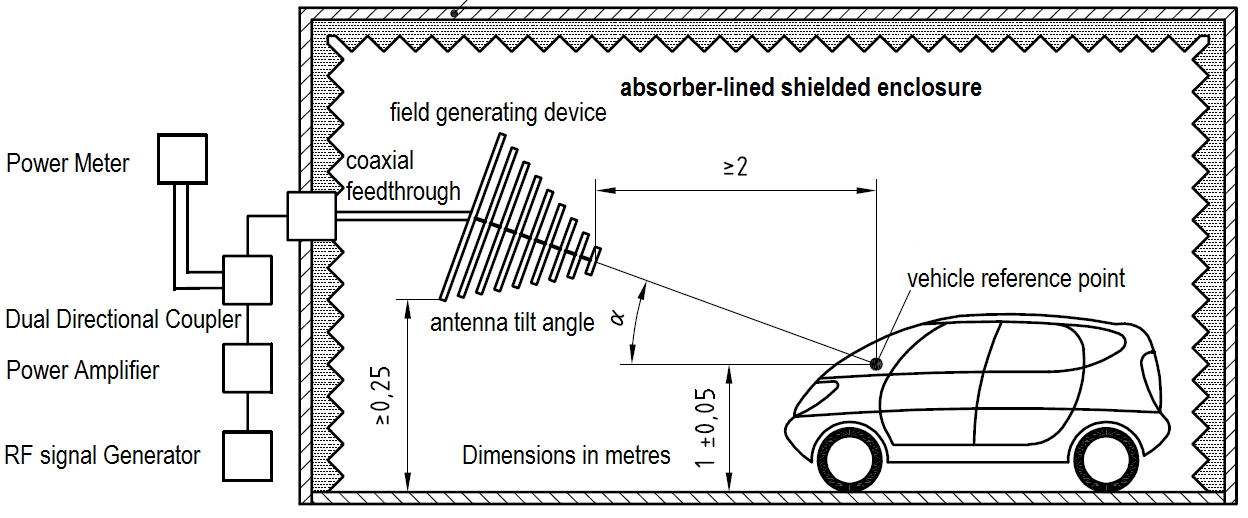
The field calibration is done without the vehicle present. The specific test level (field) shall be calibrated periodically, using an unmodulated sinusoidal wave, by recording the forward power required to produce a specific field strength (measured with a field probe) for each test frequency. The field strength is calibrated for vertical and horizontal polarizations.
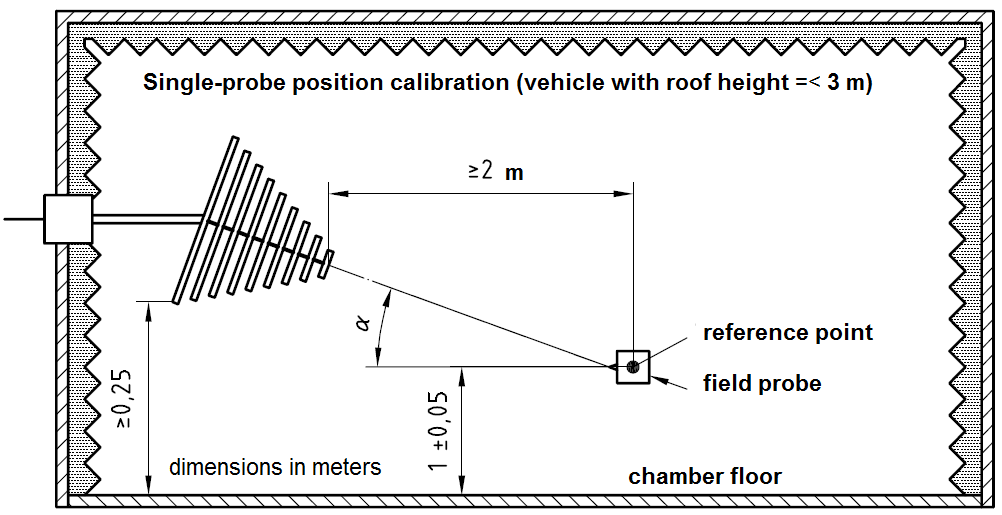
* at a height of (1 ± 0,05) m above the shielded enclosure floor for vehicles with a roof height =< 3 m;
* at a height of (2 ± 0,05) m for vehicles with roof heights > 3 m.
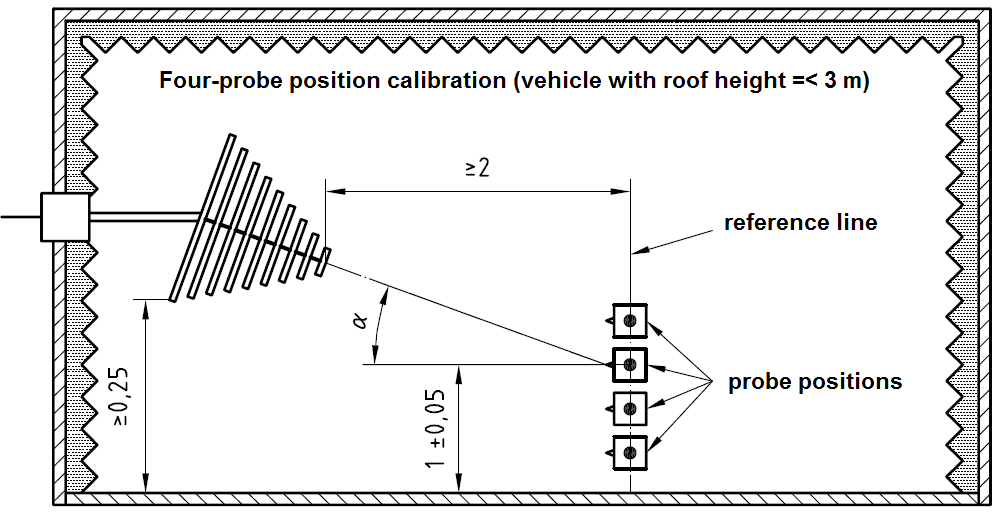
* at heights of 0,5 m, 0,8 m, 1 m and 1,2 m, for vehicles with a roof height =< 3 m;
* at heights of 1,2 m, 1,5 m, 1,8 m and 2,1 m, for vehicles with a roof height > 3 m.
8. June 2015 11:45 by streng in
Currently the WPT transfer distance is in range of several centimeters. Among the technical challenges to overcome we can mention:
- acceptable power transfer efficiency at high transfer range
- increasing power level
- misalignment tolerance
- safety considerations
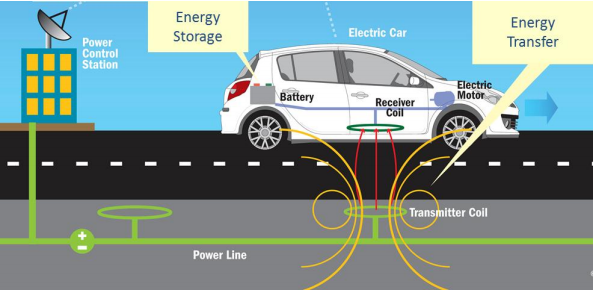
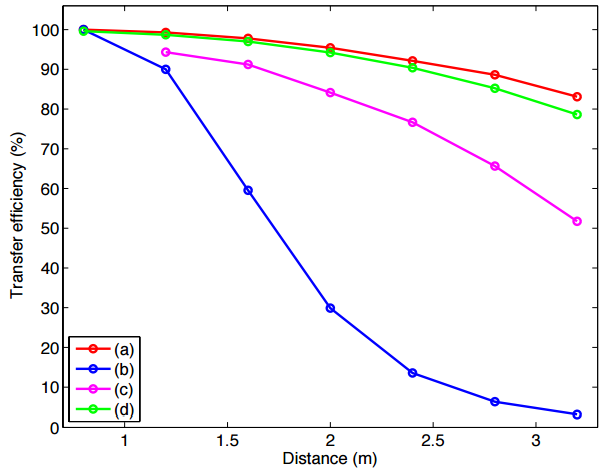
Coil-to-coil distance & 30 m working wavelength transfer efficiencies

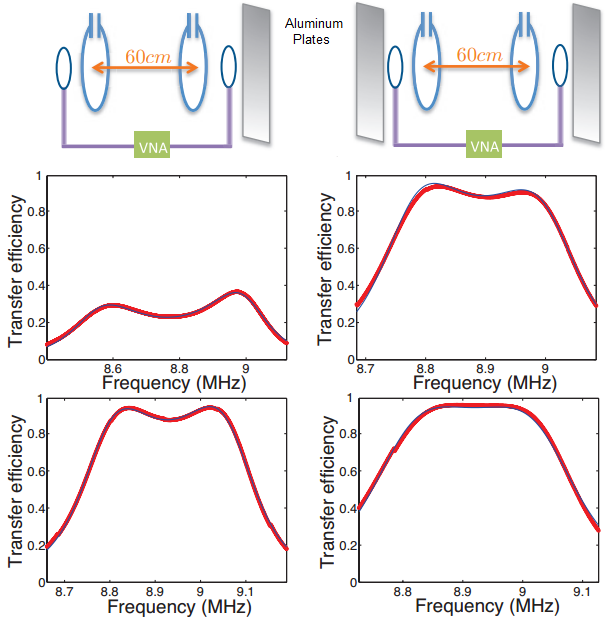
2-turn copper ribbon coil (3cm wide, 0.14 mm thick) with d=60cm and 5 to 70 pF adjustable high voltage capacitor. The quality factor of the resonator is 1338 in the absence of the metallic plane and 1329 in the presence of a metallic plane.
Source: Safe Wireless Power Transfer to Moving Vehicles: Design of Radiationless Antenna
6. June 2015 14:47 by streng in
Inductive charging stations are using the electromagnetic field to transfer energy via two induction coils acting as electrical transformer. The first induction coil (sender) is located in charging base station and creates an alternating electromagnetic field. The second induction coil (receiver) located in vehicle takes power from the electromagnetic field and converts it back into electrical current to charge the battery. The proximity between these two coils are critical. Increasing the distance between coils is possible for inductive charging systems using resonant inductive coupling. Using high-frequency induction improves efficiency of such charging stations. The safety aspects of inductive charging for EVs used in public transportation require further investigation.
